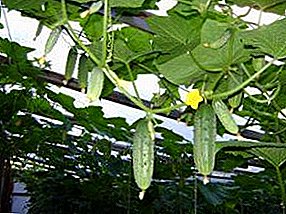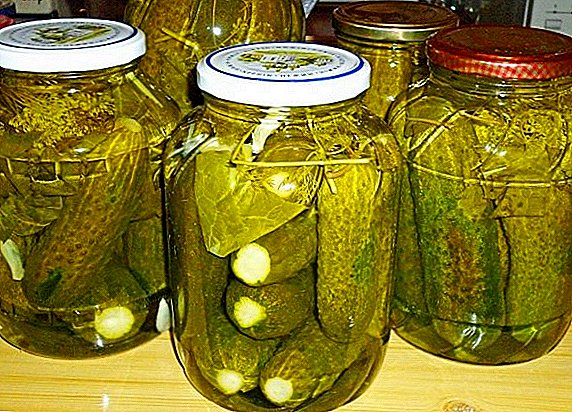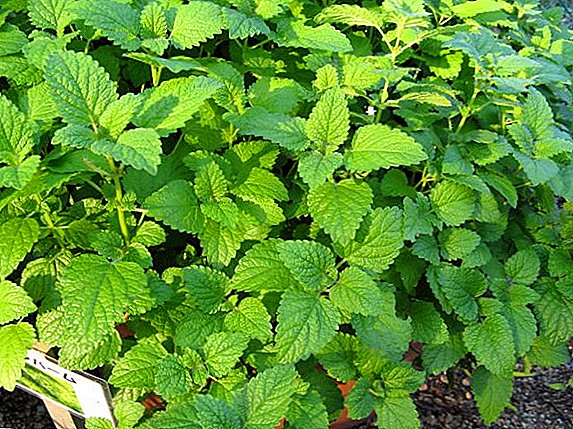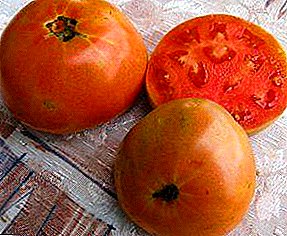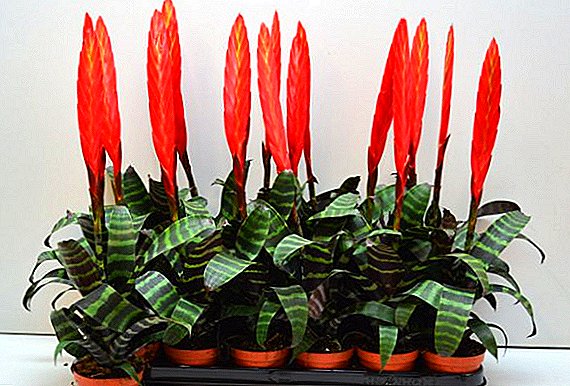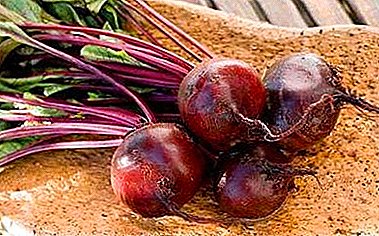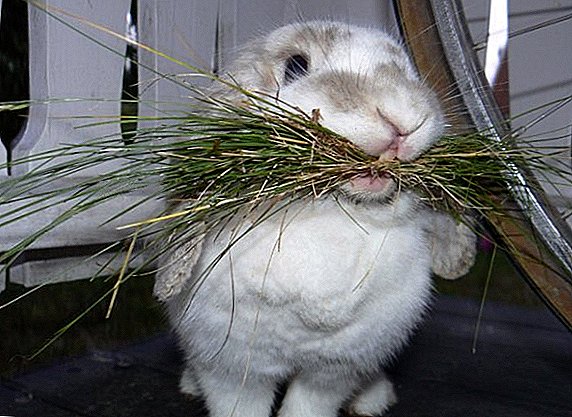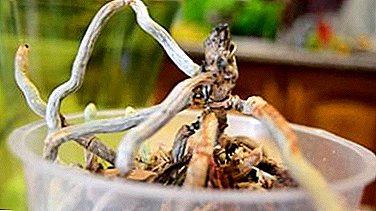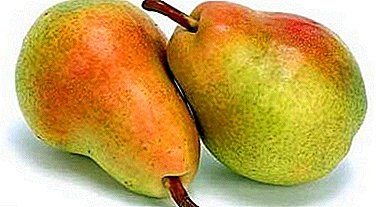
Pear fruit is an excellent dietary, allergen-free product recommended for baby food since the year.
Besides pear - it is very tasty!
One of the favorite varieties of pear is pear Moscow early - A description of varietal characteristics, photos of the fruit and recommendations and reviews of gardeners about the rules of planting and care further in the article.
What kind is it?
The early Moscow pear is one of the earliest maturing.
Usually pear varieties are divided into three types:
- summer;
- autumn;
- winter
Each of these groups, in turn, is also divided into three subtypes. So in summer varieties can be distinguished early summer, middle summer and late summer.
Early Moscow pear - refers to the early summer.
Breeding history and breeding region
 Pear varieties Moscow early bred in 1991. Selection Bred at the Timiryazev Agricultural Academy (now Russian State Agrarian University).
Pear varieties Moscow early bred in 1991. Selection Bred at the Timiryazev Agricultural Academy (now Russian State Agrarian University).
Cuttings of this variety are obtained. from Vladimir Ivanovich Susov - Honored Agronomist of Russia, a leading researcher at the Michurinsky garden.
Not zoned variety, occurred immediately from many "parents", good for Northwest and Central Region, begins to bear fruit at 6-7 year of life.
Lada, Rossoshanskaya is beautiful, Muscovite, Noyabrskaya and Rogneda are excellent in these regions.
Description varieties Moscow early
Pear tree varieties Moscow early reaches 4-5 meters in height. Crohn medium filling, pyramidal shape. The trunk and main branches are greenish in color with a slight gray tint.
The fruits with the rating of Susov in size 4, to taste 5. If these numbers are translated into the language of an ordinary gardener, the weight of pears reach the size of 120 - 140 g, and their taste is perfect: very juicy, melting in the mouth and with a delicate aroma.
In appearance the early Moscow pear is a fruit correct rounded conical shape. Smooth, thick skin greenish yellowin which during the period of full maturity appears blush from one side.
This surface tan is shades of red-orange dots. If you cut the pear, it will open inside coarse, juicy flesh of white or slightly cream color.
A photo







Specifications
Yield pears Moscow early breeder Susov himself rated on his scale as a solid four with a maximum mark of 5 points.
Naturally that yield may vary depending on the year, natural conditions, the quality of tree care. Special responsive pear Moscow early on wateringhow many times in the summer season it is necessary and the description of care for the pear is further in the article.
 For frost resistance (or winter hardiness), this type of pear received in this table a rating of 4.5.
For frost resistance (or winter hardiness), this type of pear received in this table a rating of 4.5.
This is very important, as early varieties start to develop early, when there is still the danger of returning night frosts.
Pear varieties also differ in good frost resistance: Svetlyanka, Severyanka, Tonkovka, Sverdlovchanka, Perun and Orlovskaya beauty.
Pollinators for the Moscow early can serve any early varieties of pears, zoned in central Russia.
Fruits ripen in late July - early August pretty friendly. The only drawback of early varieties in general, and the Moscow early varieties in particular - short storage. Pears are stored even in ideal refrigerator conditions. from 5 days to two weeks maximum.
Planting and care
Planting seedlings can be made both in spring and autumn. Planted before winter, the plants are usually more frost-resistant, but still in areas of the middle band you should be safe and choose the time of planting spring, because then the plant will have time to get stronger over the summer and will not freeze.
The location for the pear should be chosen. sunny and warm. Any shading of the tree will respond weakness and, accordingly, small and small crops.
The hole for the pear must be dug in advance. This is the law. Ideally - for planting in the spring from the fall should be dug pits. This is necessary in order for the soil to settle and no longer deform. Otherwise, there is a danger that the root neck of the plant will go underground, which is unacceptable for pear trees.
 In any case, a week is an obligatory term for upholding the land in the landing pit.
In any case, a week is an obligatory term for upholding the land in the landing pit.
Particular attention should be paid to the ground, in which the pear is planted and on which depends on the survival rate and further harvest.
The excavated pit is filled with fertile, loose earth. You can mix it with eggshell, ash, superphosphate. Then - Be sure to water. It is better if the water is warm - about 20-25 degrees.
And mulching to keep the soil dry. Very much depends on watering during the whole period of pear tree development. But it is also forbidden to allow planting in places of clayey, damp, on cold soil.
It would be more correct to fasten a strong garter peg in the center of the landing. He will help to stand and properly formed pear.
Pay attention when landing so that the roots are laid out and there are no voids in their neighborhood. It is advised to slightly tamp the ground both inside and outside the planting pit.
Fertilizers can feed pears from the second year of his life. Mineral fertilizers can be made in the fall and spring. But Organic is better not to abuse.With fertile land once every three years - a sufficient amount.
In the spring, you can make pre-diluted saltpeter (based on 30 g per square meter) and carbamide (100 g). By autumn you can feed with phosphorus and potassium.
 Pruning for early varietal pears is very importantBecause the powerful crown of a tree requires constant formation and thinning, so as not to shade the flowers and fruits.
Pruning for early varietal pears is very importantBecause the powerful crown of a tree requires constant formation and thinning, so as not to shade the flowers and fruits.
Sick and withered branches, annual shoots should also be removed. For this use only secateurs, having previously disinfected it. Pruned usually in the fall after picking the fruit.
Young trees are recommended to cover. Special subject to freezing rootstherefore, after collecting the leaves, sprinkle a small circle of sawdust with a radical circle, and then put lap branches. The only thing is to make sure that it is not blown away by the autumn-winter winds. You can sprinkle with snow.
Diseases and pests
Resistance to one of the most common diseases - scab Susov rated at 4.
But it does not prevent to know the signs of infection. First - there are yellow dots on the back of the sheet, which turn into brown spots. Then, the affected leaves curl and fall.
Resistance to diseases can boast: Samara Beauty, Theme, Bere Russkaya, Yakovlevskaya and Fairy.
You can fight this fungal infection with spraying in the spring Bordeaux liquid. And also pay attention to the prevention of disease, collecting and burning or composting fallen leaves.
Similar fungal disease - black cancer. It manifests itself as red spots on the bark and on the leaves and even on the fruits. Treatment - a solution of copper sulfate with simultaneous removal of infected areas of the bark.
Dry and hot weather can lead to powdery mildew. Symptoms of the disease - folded leaves, covered with white bloom. This can be avoided by spraying with a solution of colloidal sulfur.
 Of the pests should be noted moth. East and pear. These are small butterflies that lay eggs on leaves or on inflorescences.
Of the pests should be noted moth. East and pear. These are small butterflies that lay eggs on leaves or on inflorescences.
After the caterpillars form and crawl out, a massive destruction of the fruit occurs. Control measures - trapping belts, pheromone traps, preventive examinations, cleaning of foci of infection.
From ticks harm pear pear brown fruit mite and gall mite. Wrestling - spraying during the flowering of any of the acaricides, but preferably different species in order to avoid addiction and resistance of pests.
The butterfly of the day is dangerous - hawthorn. Its larvae devour pear leaves to thin veins and strongly interfere with the tree. Control measures - spraying insecticides, getting rid of flowering weeds that attract these harmful lepidoptera.
Most often in the garden are the following diseases of fruit trees: //selo.guru/ptitsa/bolezni-p/gribkovye/parsha.html, Rust, Bacterial burn.
The pear is more capricious than the more common apple tree in the Middle zone, but with proper care it will reward the gardener a hundredfold.


